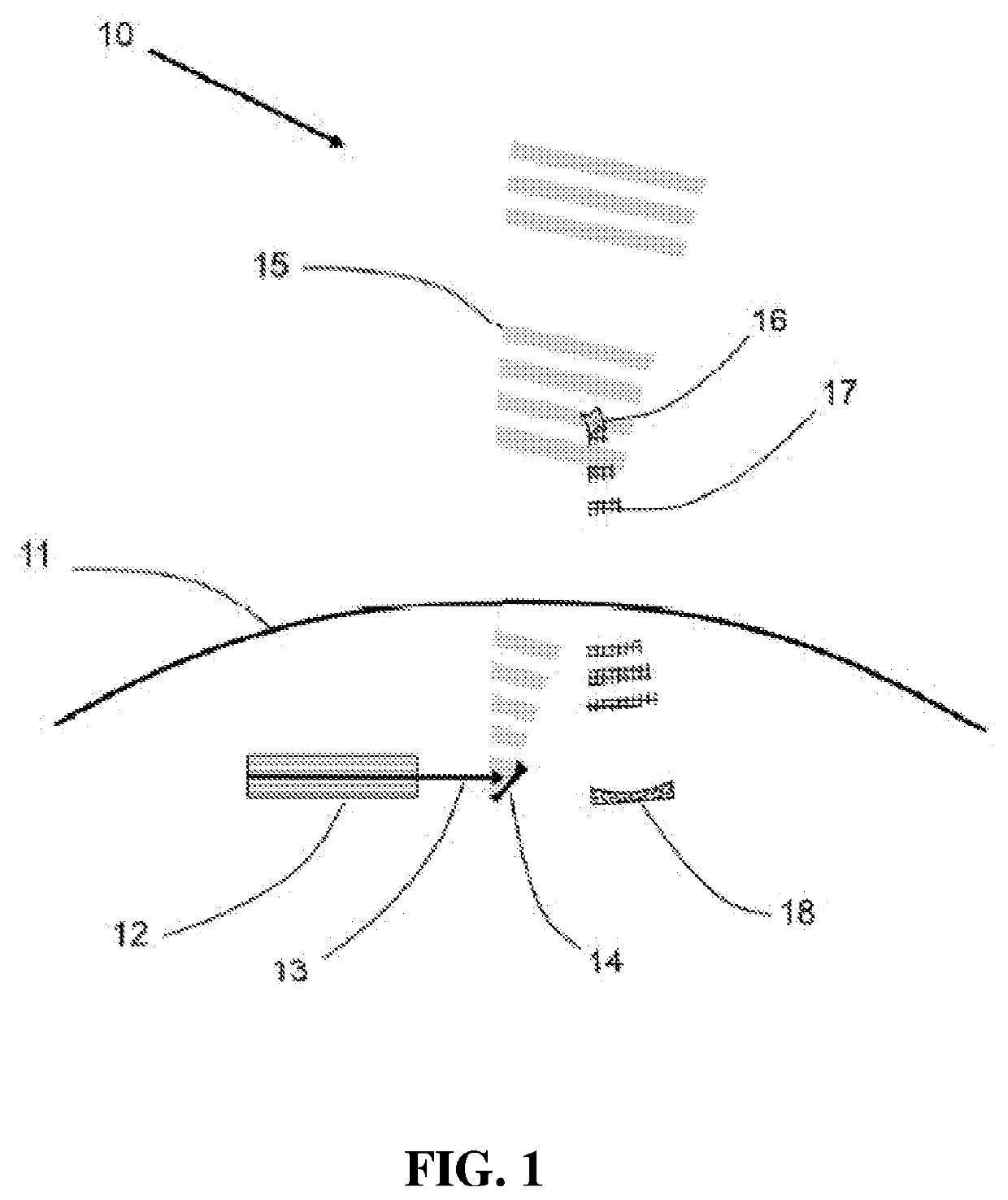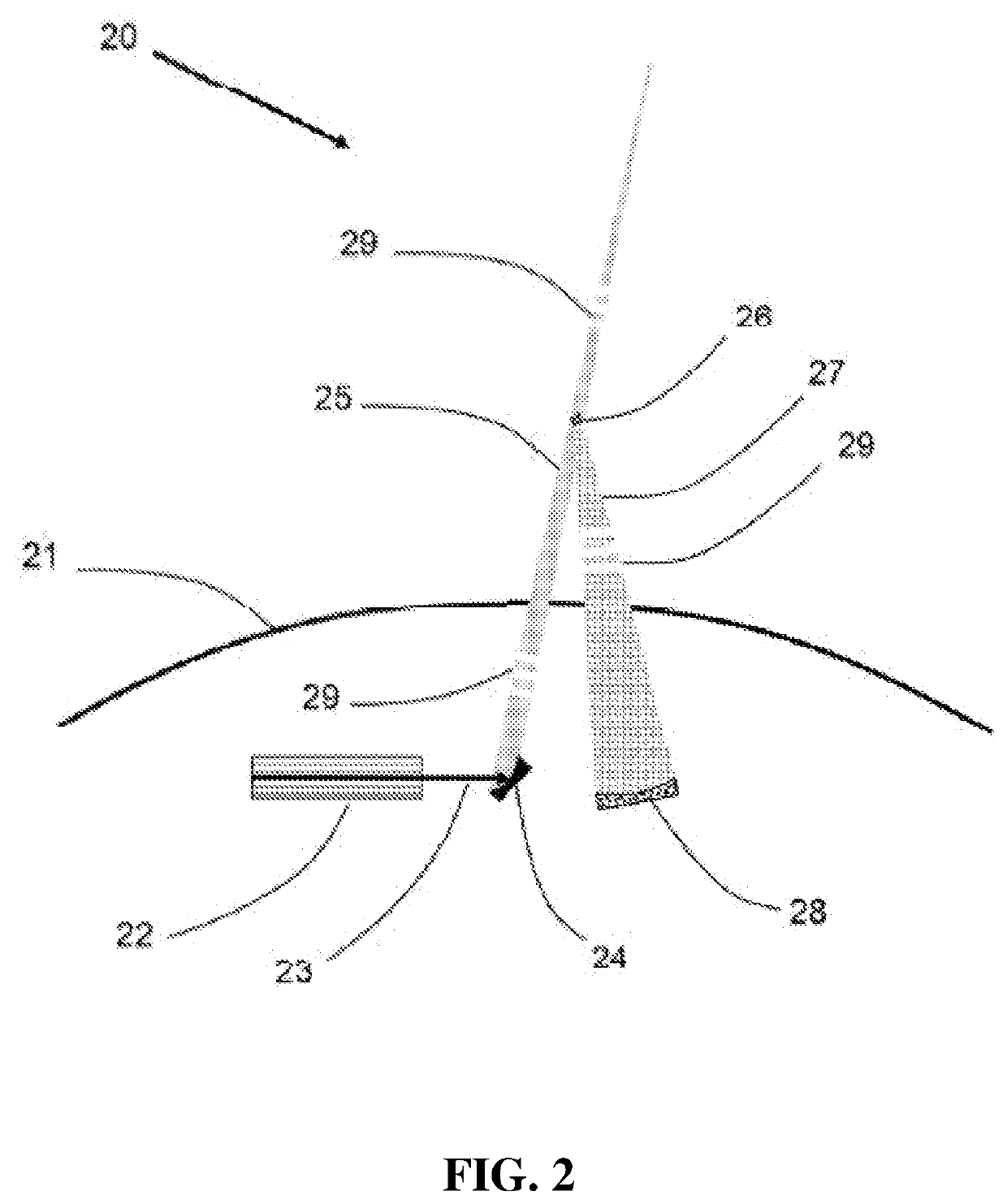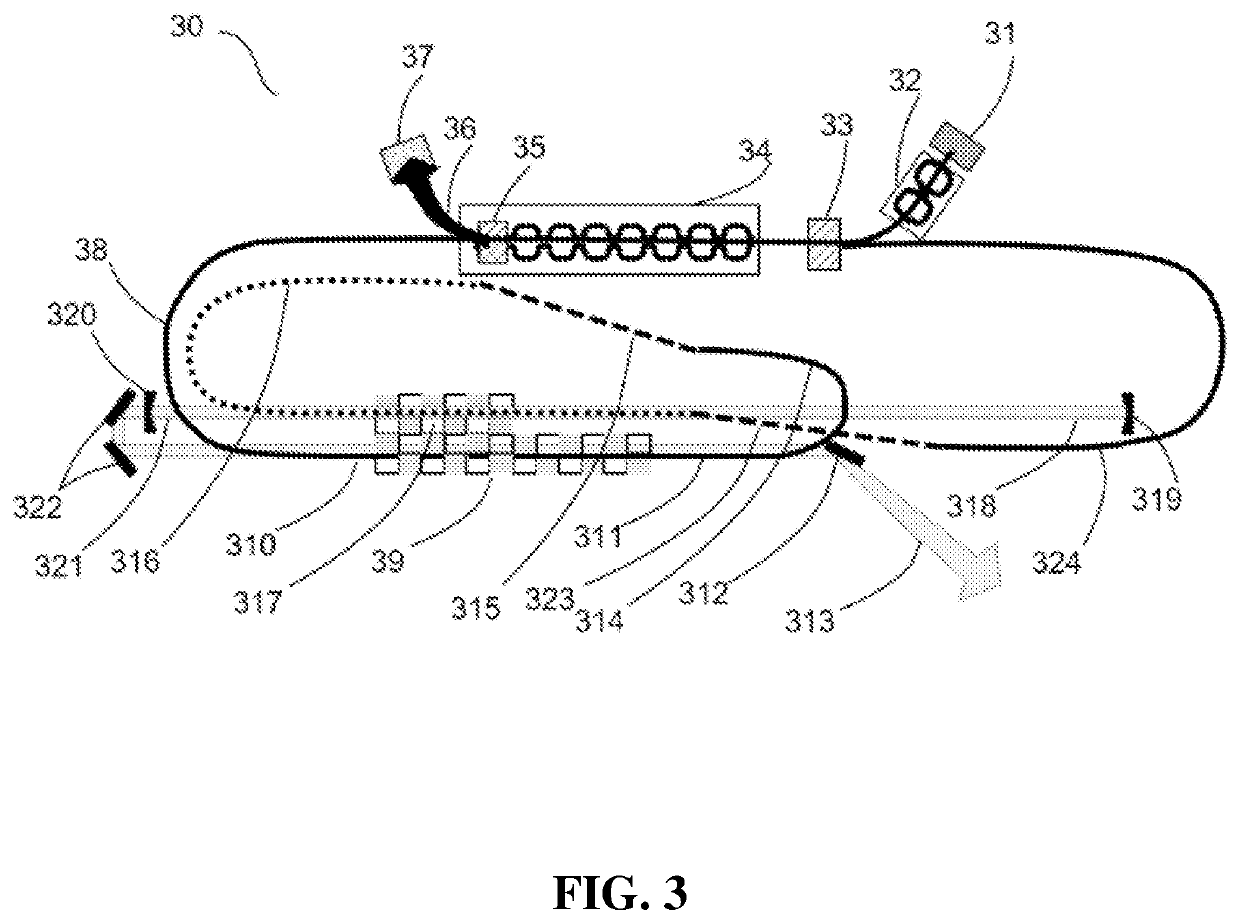Free electron laser orbital debris removal system
a free electron laser and orbital debris technology, applied in the direction of optical resonator shape and construction, transportation and packaging, and cosmonautic vehicles, can solve the problems of prior odr solutions that have not been effective at dealing with category ii od, lasers typically do not have the diffraction limited beam quality, etc., to achieve the effect of improving the signal-to-noise ratio
- Summary
- Abstract
- Description
- Claims
- Application Information
AI Technical Summary
Benefits of technology
Problems solved by technology
Method used
Image
Examples
Embodiment Construction
lass="d_n">[0032]Described herein are embodiments of FEL ODR systems and methods capable of average power, peak power light pulses, and temporal and spatial resolution combinations, to both locate and remove OD, and particularly Category II OD in some embodiments. Category II OD typically has diameters in the 1 to 10 cm range. Category I is OD10 cm. As will be appreciated by those of ordinary skill in the art, embodiments of an FEL ODR system under the present approach can also remove OD in Category I and Category III. A variety of FEL formats are possible, including Oscillator (OSC) FEL as used for the Jefferson Lab 14 kW FEL, Self-Amplified Spontaneous Emission (SASE) FEL which operates as an Amplifier (AMP) of noise, Regenerative Amplifier FEL (RAFEL), Master Oscillator / Power Amplifier (MOPA) FEL, and optical klystron FEL.
[0033]FIG. 1 illustrates an embodiment of an FEL ODR system 10 located on the surface of the Earth 11. The system may be used to locate OD 16. The FEL 12 is, in
PUM
 Login to view more
Login to view more Abstract
Description
Claims
Application Information
 Login to view more
Login to view more - R&D Engineer
- R&D Manager
- IP Professional
- Industry Leading Data Capabilities
- Powerful AI technology
- Patent DNA Extraction
Browse by: Latest US Patents, China's latest patents, Technical Efficacy Thesaurus, Application Domain, Technology Topic.
© 2024 PatSnap. All rights reserved.Legal|Privacy policy|Modern Slavery Act Transparency Statement|Sitemap



